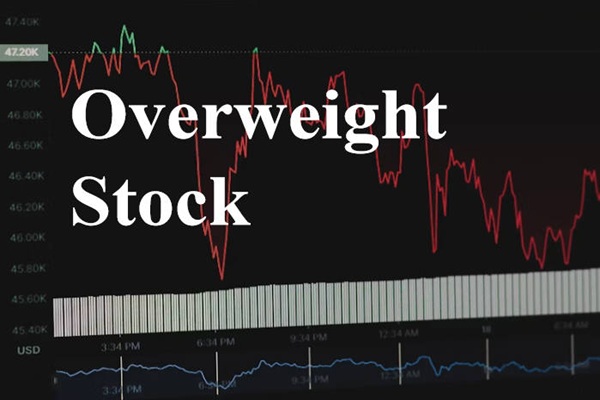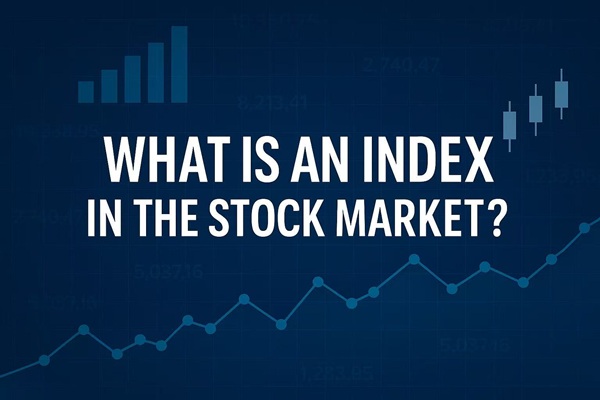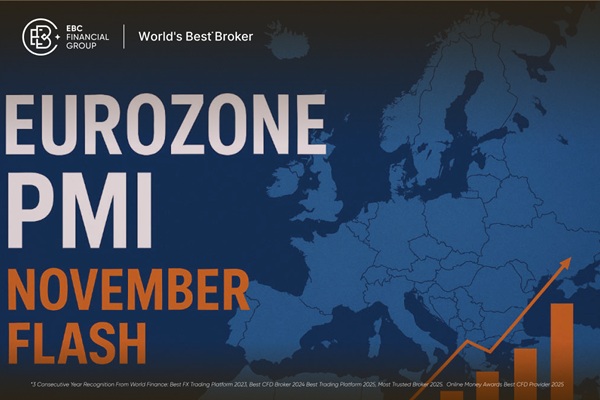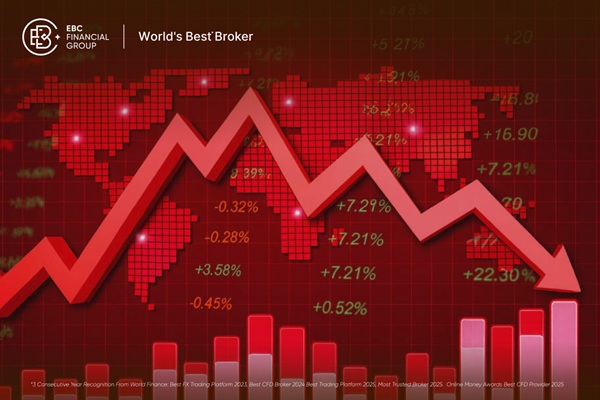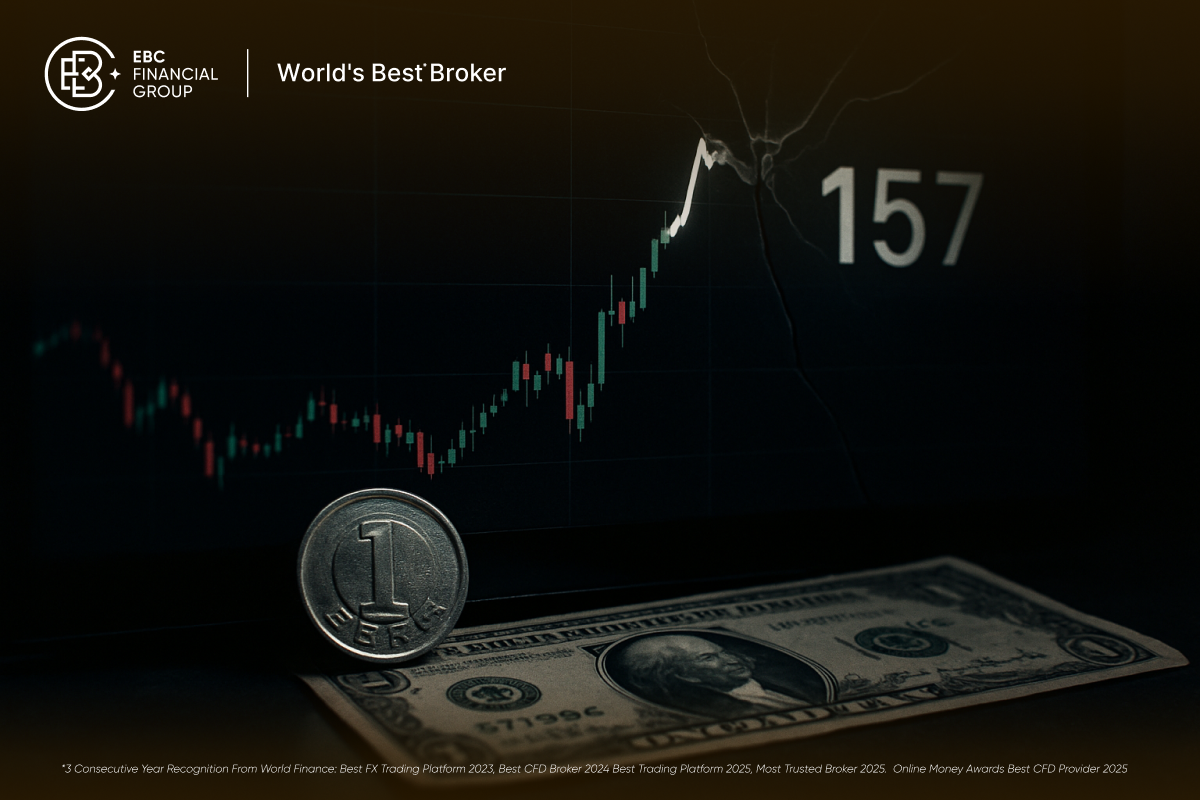A Changing Market and the Need for Clarity

In 2025. global investors face one of the most complex landscapes in years. Interest rates have steadied after a volatile tightening cycle, equity markets are adjusting to slower growth in the United States and Europe, and technology remains the main driver of capital flows.
In such an environment, understanding the types of stocks is no longer an academic exercise — it is essential for constructing a balanced, resilient portfolio.
Different stocks behave differently under shifting market conditions. Growth shares may thrive during expansion, while defensive or dividend-paying names provide stability when markets cool.
Recognising these distinctions allows investors to diversify intelligently, manage risk, and align each holding with long-term objectives.
Classification by Share Type (Ownership and Rights)

1) Common Stock
Represents basic ownership in a company.
Holders usually have voting rights and may receive dividends.
In liquidation, they are the last to be paid after debt and preferred shareholders.
Example: Apple Inc. — ordinary shareholders benefit from capital growth and dividends, but hold residual claims.
2) Preferred Stock
Offers fixed dividends and priority over common shares in payouts.
Usually lacks voting rights but provides steadier income.
May include features such as cumulative, convertible, or callable preferences.
Example: Bank of America issues preferred shares that appeal to income-focused investors seeking stability.
3) Dual-Class and Tracking Shares
Example: Alphabet Inc. (GOOG and GOOGL) maintains dual classes to retain founder control.
Classification by Investment Style or Strategy
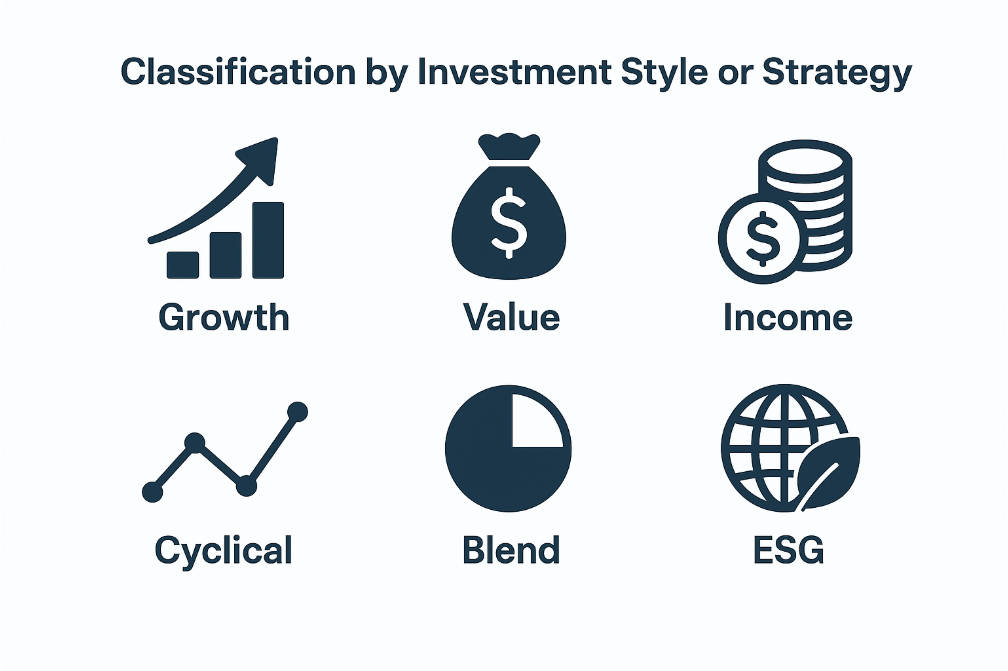
Companies with strong earnings potential and high reinvestment rates.
Typically trade at higher valuations due to future growth expectations.
Dividends are rare; capital appreciation is the focus.
Example: NVIDIA and Tesla are prime growth stocks driven by innovation and market expansion.
Shares trading below perceived intrinsic value, often based on fundamental ratios such as P/E or P/B.
Favoured by investors seeking bargains or long-term rebound potential.
Example: JPMorgan Chase and Shell plc are commonly viewed as value-oriented holdings.
Provide regular dividends and are often from mature, financially stable companies.
Suitable for conservative investors or retirees prioritising cash flow.
Example: Unilever and Procter & Gamble are classic income stocks with consistent payouts.
4) Cyclical vs. Defensive Stocks
Example: Toyota Motor Corporation sees demand rise during global expansions.
Example: Johnson & Johnson maintains steady revenue regardless of economic cycles.
5) Blend or Core Stocks
Example: Microsoft blends consistent profitability with growth opportunities.
6) Turnaround or Special Situation Stocks
Example: General Electric has transitioned through turnaround phases in recent years.
Low-priced, thinly traded shares, often below USD 5.
High volatility and risk, typically unsuitable for conservative investors.
8) ESG or Sustainable Stocks
Chosen based on environmental, social, and governance (ESG) performance.
Appeal to investors aligning financial goals with ethical values.
Example: Ørsted A/S (renewable energy) and NextEra Energy are ESG-oriented stocks.
Classification by Market Capitalisation (Company Size)
Stock Categories by Market Capitalisation
| Category |
Typical Market Cap (USD) |
Characteristics |
Example Companies |
| Mega-cap |
Above 300 billion |
Global leaders, high stability |
Apple, Microsoft |
| Large-cap |
10–300 billion |
Mature, diversified businesses |
Nestlé, Toyota |
| Mid-cap |
2–10 billion |
Balanced growth and resilience |
Lululemon, Spotify |
| Small-cap |
300 million–2 billion |
Nimble, higher growth potential |
ZoomInfo, Revolve Group |
| Micro/Nano-cap |
Below 300 million |
Speculative, low liquidity |
OTC-listed firms |
Insight: Large-cap stocks dominate institutional portfolios due to liquidity and predictable returns, whereas small- and mid-caps often outperform in early recovery cycles.
Intersection: Style Meets Size
Investors frequently combine style (growth, value, blend) with size (small, mid, large) to define a portfolio's risk-return profile.
Morningstar's "style box" illustrates this interaction:
A well-balanced portfolio often holds exposure across several boxes.
Other Functional Categories
Example: Coca-Cola, Johnson & Johnson, Toyota.
Momentum Stocks
Example: NVIDIA and Meta Platforms during major upswings.
Defensive Sectors
Comparison of Major Stock Types and Investment Profiles
| Stock Type |
Primary Focus |
Risk Level |
Income Potential |
Best For |
Example |
| Growth |
Capital appreciation |
High |
Low |
Long-term investors seeking expansion |
NVIDIA, Tesla |
| Value |
Undervalued opportunities |
Medium |
Medium |
Contrarian or fundamental investors |
JPMorgan, Shell |
| Income / Dividend |
Regular dividends |
Low–Medium |
High |
Income-focused investors |
Unilever, P&G |
| Cyclical |
Economic sensitivity |
High |
Variable |
Investors timing economic cycles |
Toyota, Boeing |
| Defensive |
Stability in downturns |
Low |
Medium |
Conservative portfolios |
Johnson & Johnson |
| Blue-Chip |
Quality and reliability |
Low |
Medium–High |
Core long-term holdings |
Coca-Cola, Toyota |
| Penny / Speculative |
High-risk bets |
Very High |
Low–Uncertain |
Traders and speculators |
OTC tech firms |
| ESG / Sustainable |
Ethical impact |
Medium |
Medium |
Responsible investors |
Ørsted, NextEra Energy |
Practical Considerations for Investors
Diversification: Spreading across stock types and sectors reduces volatility.
Economic Cycle Awareness: Align cyclical and defensive exposure with macroeconomic phases.
Risk Tolerance: Growth and speculative stocks suit higher-risk appetites; income and defensive stocks fit conservative investors.
Portfolio Review: Companies evolve — a growth stock may mature into a value or income stock over time.
Frequently Asked Questions (FAQ)
Q1. Which type of stock is best for beginners?
Beginners often prefer large-cap or blue-chip stocks because of their stability and proven records. These stocks allow new investors to learn market dynamics without excessive volatility.
Q2. Are growth stocks riskier than value stocks?
Yes. Growth stocks are priced for future potential, which makes them more sensitive to market sentiment and interest rates. Value stocks, by contrast, often provide a margin of safety through undervaluation.
Q3. Can a stock belong to more than one category?
Absolutely. Microsoft, for instance, can be considered both a growth and blue-chip stock. Classifications overlap depending on metrics and investor perspective.
Q4. Do dividends make a stock less risky?
Not necessarily, but consistent dividends can cushion returns during market downturns and signal financial strength.
Q5. How should investors choose among stock types?
The choice depends on investment goals, time horizon, and risk tolerance. A well-structured portfolio blends several stock types to capture growth while managing risk.
Conclusion
The equity market is vast and constantly evolving, yet its foundations remain clear: every stock represents a stake in a business, and every classification reflects a different risk-return trade-off.
For investors in 2025 navigating uncertain markets, understanding these categories is the first step toward informed, disciplined decision-making.
Whether the goal is capital growth, stable income, or long-term preservation, recognising the types of stocks empowers investors to build portfolios that endure through cycles and change.
Disclaimer: This material is for general information purposes only and is not intended as (and should not be considered to be) financial, investment or other advice on which reliance should be placed. No opinion given in the material constitutes a recommendation by EBC or the author that any particular investment, security, transaction or investment strategy is suitable for any specific person.










